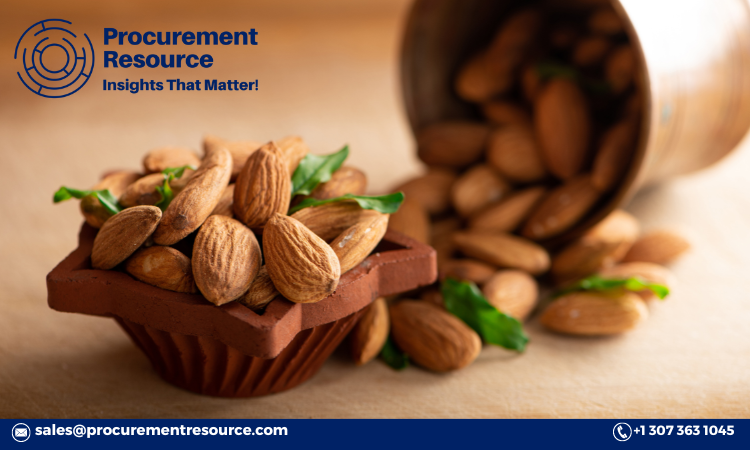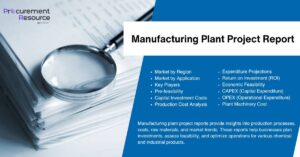
Almonds, cherished for their taste and nutritional benefits, are one of the most popular nuts consumed worldwide. The production process of almonds is intricate, involving several stages from cultivation to processing. Understanding this process is crucial for analyzing the cost structure and identifying areas for potential cost savings.
The journey of almonds begins in the orchards, where almond trees are planted and nurtured. These trees require a Mediterranean climate, characterized by hot summers and mild, wet winters. The almond trees bloom in the spring, and the nuts are harvested in late summer to early fall. The harvesting process typically involves shaking the trees to dislodge the almonds, which are then collected from the ground.
Post-harvest, the almonds undergo several processing steps. They are hulled, which involves removing the outer hull, and shelled to extract the edible kernel. Further processing includes cleaning, sorting, and grading based on size and quality. Some almonds are also blanched, roasted, or flavored, depending on market demand. The processed almonds are then packaged and distributed to various markets.
Request For Sample: https://www.procurementresource.com/production-cost-report-store/almonds/request-sample
Manufacturing Report and Process
The manufacturing process of almonds is highly mechanized and involves several key stages. Below is a detailed description of each stage:
Cultivation
Almond trees are typically planted in rows with specific spacing to ensure adequate sunlight and air circulation. The trees are irrigated using drip or sprinkler systems to maintain optimal soil moisture levels. Fertilization is carried out periodically to provide essential nutrients to the trees. Pest and disease management is also crucial to ensure healthy growth.
Harvesting
Harvesting is a critical stage in almond production. Mechanical shakers are commonly used to shake the trees, causing the almonds to fall to the ground. The nuts are then swept into rows and collected using harvesters. This process requires careful timing to ensure the nuts are harvested at the right maturity level.
Hulling and Shelling
Once harvested, the almonds are transported to processing facilities where they are hulled and shelled. Hulling involves removing the outer hull, while shelling removes the hard shell encasing the kernel. Modern hulling and shelling equipment are designed to minimize damage to the kernels and ensure high efficiency.
Cleaning and Sorting
After hulling and shelling, the almonds are cleaned to remove any debris or foreign materials. They are then sorted based on size, shape, and quality. Advanced sorting machines use optical sensors to detect and remove defective nuts, ensuring only high-quality almonds proceed to the next stage.
Blanching, Roasting, and Flavoring
Depending on market demand, some almonds undergo additional processing such as blanching (removing the skin), roasting, or flavoring. Blanching involves briefly immersing the almonds in hot water to loosen the skins, which are then removed mechanically. Roasting enhances the flavor and texture of the almonds, while flavoring involves coating them with various seasonings or spices.
Packaging and Distribution
The final stage involves packaging the almonds in various forms, such as whole nuts, sliced, diced, or ground. The packaged almonds are then distributed to retailers, wholesalers, or directly to consumers. Ensuring proper packaging and storage conditions is crucial to maintain the freshness and quality of the almonds.
Raw Material Costs
Raw material costs are a significant component of the overall production cost of almonds. These costs include the expenses incurred in the cultivation and harvesting stages. Key factors influencing raw material costs include:
Land and Water
Almond orchards require substantial land and water resources. The cost of acquiring and maintaining suitable land can vary significantly based on location. Water costs are also a major concern, particularly in regions facing water scarcity. Efficient irrigation systems and water management practices are essential to optimize water usage and reduce costs.
Labor
Labor costs play a crucial role in almond production. Although mechanization has reduced the reliance on manual labor, certain tasks such as pruning, pest control, and some aspects of harvesting still require human intervention. The cost of labor can fluctuate based on local wage rates and availability of skilled workers.
Fertilizers and Pesticides
Fertilizers and pesticides are necessary to ensure healthy tree growth and protect against pests and diseases. The cost of these inputs can vary based on market prices and the specific requirements of the orchard. Integrated pest management practices can help reduce pesticide usage and associated costs.
Equipment and Maintenance
Modern almond production relies heavily on specialized equipment for planting, irrigation, harvesting, and processing. The initial investment in machinery can be substantial, and ongoing maintenance costs must also be considered. Regular maintenance is essential to ensure the equipment operates efficiently and to avoid costly breakdowns.
Energy
Energy costs are incurred at various stages of almond production, particularly during irrigation and processing. Efficient energy management practices, such as using renewable energy sources and optimizing energy usage, can help reduce these costs.
Latest News
Staying updated with the latest news and trends in the almond industry is crucial for understanding market dynamics and making informed business decisions. Here are some of the recent developments:
Climate Change Impact
Climate change poses a significant challenge to almond production. Changes in temperature and precipitation patterns can affect the growth and yield of almond trees. Researchers are exploring resilient almond varieties and adaptive agricultural practices to mitigate the impact of climate change.
Water Management Innovations
Innovations in water management are gaining traction in the almond industry. Technologies such as precision irrigation and soil moisture sensors are helping farmers optimize water usage and reduce wastage. These innovations are particularly important in regions facing water scarcity.
Sustainability Initiatives
Sustainability is a growing focus in the almond industry. Many producers are adopting sustainable farming practices, such as organic farming, integrated pest management, and renewable energy usage. These initiatives not only benefit the environment but also enhance the marketability of almonds.
Market Trends
The demand for almonds continues to rise globally, driven by increasing awareness of their health benefits. However, market trends can be influenced by factors such as trade policies, currency fluctuations, and consumer preferences. Keeping an eye on these trends is essential for aligning production and marketing strategies.
Research and Development
Ongoing research and development efforts are aimed at improving almond production techniques and developing new products. Innovations in breeding, pest management, and processing are helping to enhance the efficiency and sustainability of almond production.
In conclusion, the production of almonds involves a complex and multi-stage process, with various factors influencing the cost structure. Understanding these factors and staying updated with the latest industry trends is essential for optimizing production and ensuring the profitability of almond farming.

